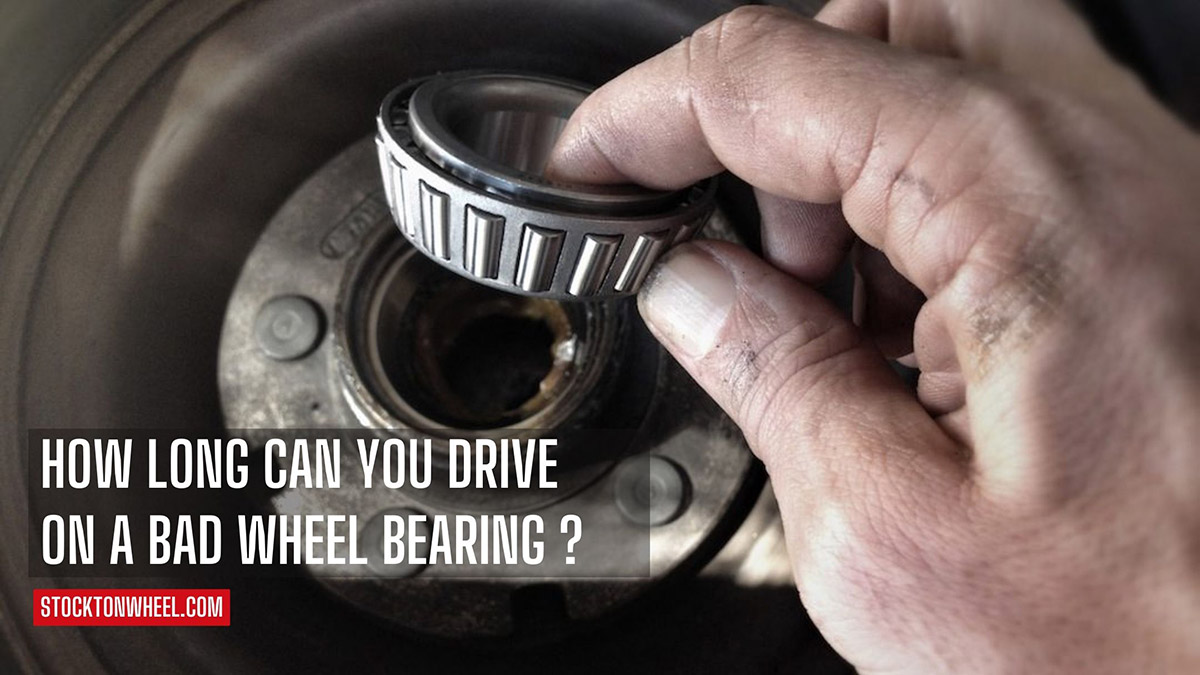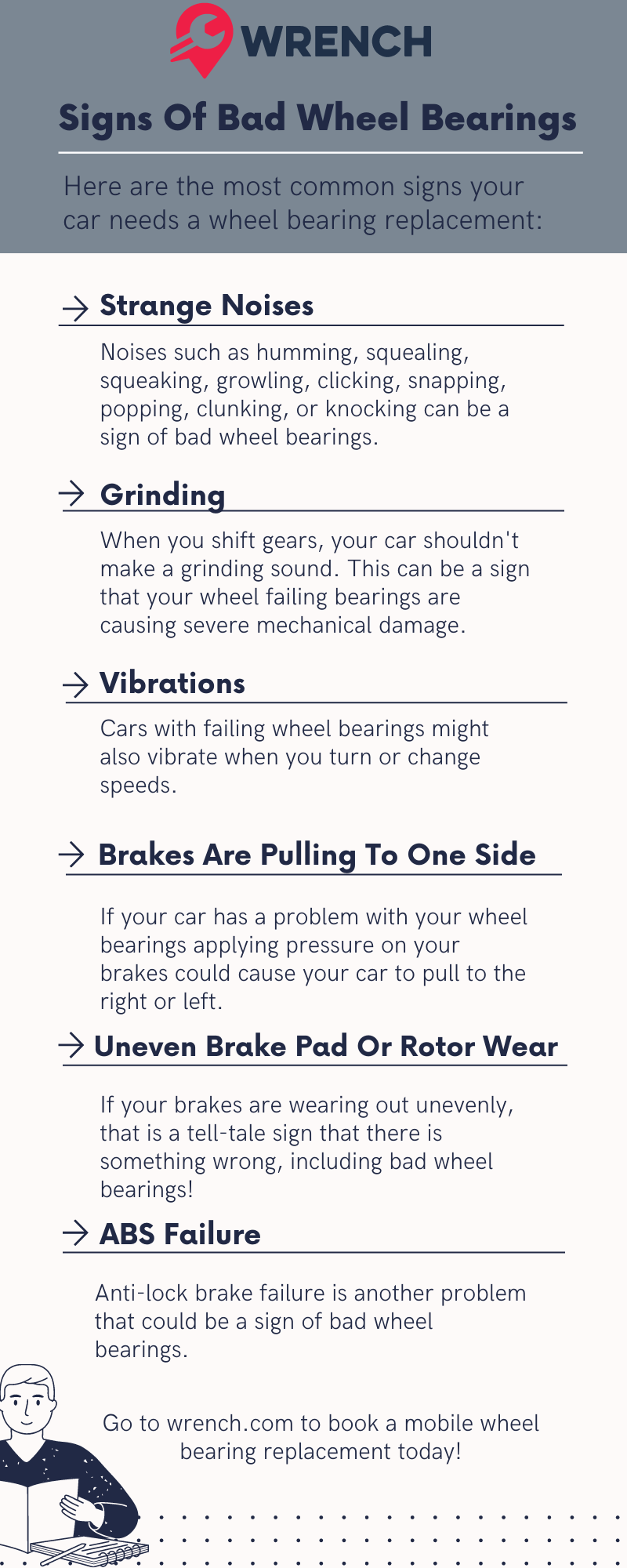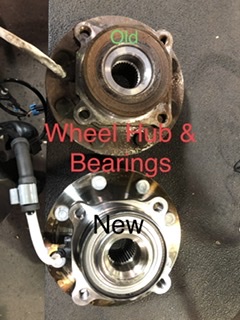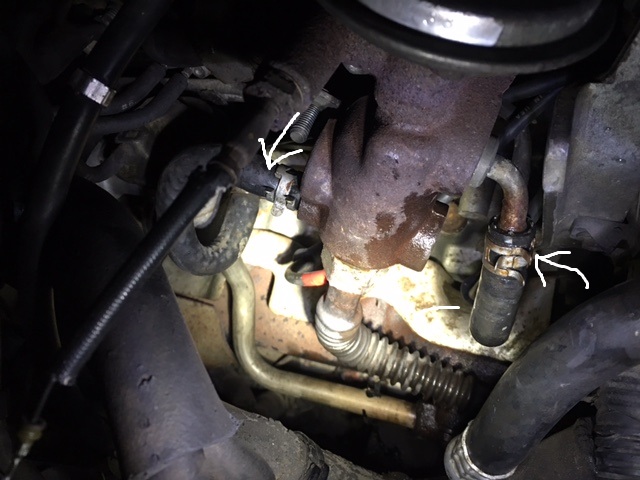How Long Can You Drive on a Bad Wheel Bearing
Driving on a bad wheel bearing is risky and it’s recommended to limit driving to a few miles, ideally to the nearest repair shop. Continuing to drive on a damaged wheel bearing can lead to severe and costly complications.
A wheel bearing is critical for the smooth and safe operation of your vehicle. It allows your car’s wheels to rotate with minimal friction, supporting the car’s weight and ensuring a smooth ride. When a wheel bearing starts to fail, it can compromise vehicle control and lead to potential wheel lockup.
As a driver, you may notice a grinding noise, vibrations, or uneven tire wear, all signs of a failing wheel bearing. Prompt attention to these symptoms is crucial, as driving on a bad wheel bearing can cause further damage to your car. The immediate consultation with a professional mechanic is advised to prevent the risks associated with driving on a compromised wheel bearing.
Early Symptoms Of A Bad Wheel Bearing
Driving with a bad wheel bearing is risky business. It’s like walking in shoes that are falling apart. You can do it, but it’s not safe or smart. Let’s talk about some early warning signs. Spotting these symptoms early can save your vehicle from further damage and ensure your safety on the road.
Unusual Noises From Your Wheel
One tell-tale sign that your wheel bearing is crying for help is strange noises. It’s not the usual road hum. It’s different. This noise is a constant companion as you drive and gets louder with speed. Think of it as a metal version of a groan or a whine. Here, take a look:
- Clicking: It’s like a pen clicking constantly.
- Grinding: It sounds like something is being chewed inside your wheel.
- Roaring: It’s a deeper noise, like an animal growling from your tire area.
Steering Wheel Vibration
When your car’s wheel bearing has an “ouch”, it talks to you through the steering wheel. The wheel bearing cries make the steering wheel vibrate. This shaking starts off small. Then it becomes a full-on shake rattle and roll as you pick up speed. It feels like your steering wheel is trying to dance with you. A wheel bearing in good shape doesn’t do that.
In short, these signs are the car’s way of saying, “Check my wheel bearings, please!”. Catching these early symptoms can prevent a small issue from turning into a big problem. Remember, your car’s parts all speak the same language – it’s just a matter of listening!

Credit: www.stocktonwheel.com
Risks Of Driving With A Faulty Wheel Bearing
Driving with a bad wheel bearing is risky. Your safety on the road is important. A faulty wheel bearing can cause issues. You may not realize it, but it’s urgent. Let’s explore why driving with a bad wheel bearing spells trouble.
Compromised Steering And Handling
Control of your car becomes tougher with a bad wheel bearing. The wheel bearing is part of the wheel’s hub assembly. It helps with smooth turning of the wheel.
- Steering wheel vibrates or feels loose
- Bearing damage can lead to a wheel locking up
- Your vehicle may pull to one side
These problems mean you must fix the wheel bearing soon.
Increased Wear On Other Car Parts
A bad wheel bearing strains other car parts. They work harder to compensate.
| Car Part | Effect of Bad Bearing |
|---|---|
| Tires | Uneven wear, faster degradation |
| Suspension | Extra stress, possible damage |
| Brakes | Reduced efficiency, potential failure |
Ignoring a bad bearing means higher repair costs later. Be proactive, repair early to save money and stay safe.
Factors Influencing Wheel Bearing Durability
Understanding what affects the lifespan of a wheel bearing is crucial for vehicle maintenance. Several factors play a role in how long wheel bearings last before they need replacing. Let’s look at these variables.
Quality Of The Wheel Bearing
Not all wheel bearings are created equal. The materials and manufacturing process determine their strength and durability. Higher-quality wheel bearings, although pricier, tend to last longer and withstand harsher conditions.
- Steel bearings are common but vary in performance based on the steel grade.
- Ceramic bearings, generally more expensive, offer enhanced longevity and resistance to heat.
Driving Conditions And Habits
Driving conditions greatly impact a bearing’s lifespan. Rough terrain, potholes, and water exposure can cause premature wear. City driving typically results in more turns and stops, leading to faster degradation of wheel bearings.
Your driving habits also play a role. Aggressive driving, such as taking corners at high speeds or hitting speed bumps and potholes hard, strains the bearings more. Consider these impacts:
- Speed – Higher speeds apply more force.
- Load – Heavy loads increase pressure on bearings.
- Maintenance – Regular checks can catch early signs of wear.
| Factor | Effect on Durability |
|---|---|
| Quality | Higher quality means longer life. |
| Conditions | Bad roads can shorten lifespan. |
| Habits | Rough driving wears bearings out faster. |
Assessing The Severity Of Wheel Bearing Damage
Driving with a damaged wheel bearing is serious. It’s crucial to understand the severity of the problem. This can prevent accidents and costly repairs. In this section, learn to assess wheel bearing damage. See how long you can safely drive before needing a repair.
Simple Checks For Wheel Bearing Integrity
Listen careful for unusual noises. A humming sound from your wheels is a sign. Perform a simple test. Push your car back and forth. Check if there’s excessive play in the wheel. Do a visual inspection too. Look for rust or metal shavings around the wheel bearing.
Follow these steps:
- Raise the car – Use a jack stand
- Shake the tire – Check for movement
- Spin the wheel – Listen for noise
These checks help gauge bearing damage.
When To Consult A Professional Mechanic
At times, issues seem minor. Yet, they need an expert’s opinion. This is vital for safety. Watch out for signs. These include:
- ABS light activation
- Uneven tire wear
- Steering problems
Do not delay. A mechanic can assess damage levels. They use equipment to find issues. Make sure to visit the workshop early. This can save you money. It also ensures safe driving.
Take notes. Keep a journal of symptoms. This helps your mechanic. Quick action is key.
Temporary Measures And Precautions
When wheel bearings wear out, your car’s handling becomes risky. Knowing temporary measures and precautions can save you from a sudden breakdown. This is not a permanent fix. You should take your vehicle to a certified mechanic as soon as possible. But as a short-term solution, here are some steps to ensure safety and reach your destination.
Reducing Speed And Avoiding Stress On The Bearing
Driving fast is dangerous with a bad wheel bearing. Slow down to prevent further damage. Less speed means less stress on the affected area. This helps in minimizing the risk of a possible mishap.
- Drive below the speed of 30 mph where possible.
- Avoid sudden accelerations or stops.
- Skip high-speed highways and choose slower routes.
Short-term Fixes Until Repair
Immediate action can protect the bearing a bit longer. These steps won’t fix the problem. They will help you get to a repair shop safely.
- Check the tightness of the wheel nuts.
- Avoid carrying heavy loads that put extra weight on the bearing.
- Lubricate the bearing with appropriate grease, if accessible.
Remember: These are only temporary measures. A failing wheel bearing can lead to wheel lock-up or detachment. Don’t ignore this serious issue and seek professional help immediately.
The Safe Time Frame To Replace A Bad Wheel Bearing
Knowing the safe time frame for wheel bearing replacement preserves your safety and your vehicle’s longevity. A wheel bearing might give warnings before failing, or it could deteriorate suddenly. Let’s explore when to address a bad wheel bearing and prevent potential danger.
Immediate Concerns Vs. Gradual Deterioration
Immediate attention may be necessary if a wheel bearing shows certain signs. A loud grinding or roaring noise from the wheel areas often indicates an urgent issue. Continued driving can be dangerous. Gradual wear, on the other hand, gives some time to schedule replacement. Ignoring symptoms, such as a rumbling or growling noise, especially during turns, still leads to worsened conditions over time.
Guidelines For Timely Replacement
Follow these guidelines to ensure timely replacement of a bad wheel bearing:
- Get it checked – If you hear unusual noises, visit a mechanic.
- Note the severity – Loud and consistent sounds mean act fast.
- Keep track of mileage – Bearings have a life expectancy. Ask your mechanic for this info.
- Schedule maintenance – Use a mechanic’s advice to plan for replacement.
- Use quality parts – Invest in high-quality bearings for long-term benefits.
Procrastination isn’t wise. A bad wheel bearing compromises control and can lead to wheel detachment. Plan for a prompt replacement to ensure safety.

Credit: wrench.com
Frequently Asked Questions On How Long Can You Drive On A Bad Wheel Bearing
What Are Signs Of A Bad Wheel Bearing?
Bad wheel bearings often produce a grinding noise, especially while turning. You might also notice uneven tire wear, or a wobbling steering wheel. Over time, the noise can become constant.
Can Driving On A Failing Wheel Bearing Be Dangerous?
Yes, driving with a damaged wheel bearing is dangerous. It may lead to wheel detachment or loss of steering control. It’s recommended to address the issue promptly to ensure safety.
How Urgent Is Wheel Bearing Replacement?
Replacing a bad wheel bearing should be considered urgent. Prolonging repair can cause further damage to your car’s suspension and brakes, and compromise vehicle safety.
What Is The Average Cost For Wheel Bearing Replacement?
The average cost to replace a wheel bearing varies between $100 and $800. This cost fluctuates based on the car model and labor rates of the auto repair shop.
Conclusion
Driving with a bad wheel bearing is a gamble with your safety and vehicle integrity. Aim to address the issue promptly to avoid extensive damage. Remember, detecting the signs early and seeking professional repair is your best bet for road safety and vehicle longevity.
Keep those wheels turning smoothly!




